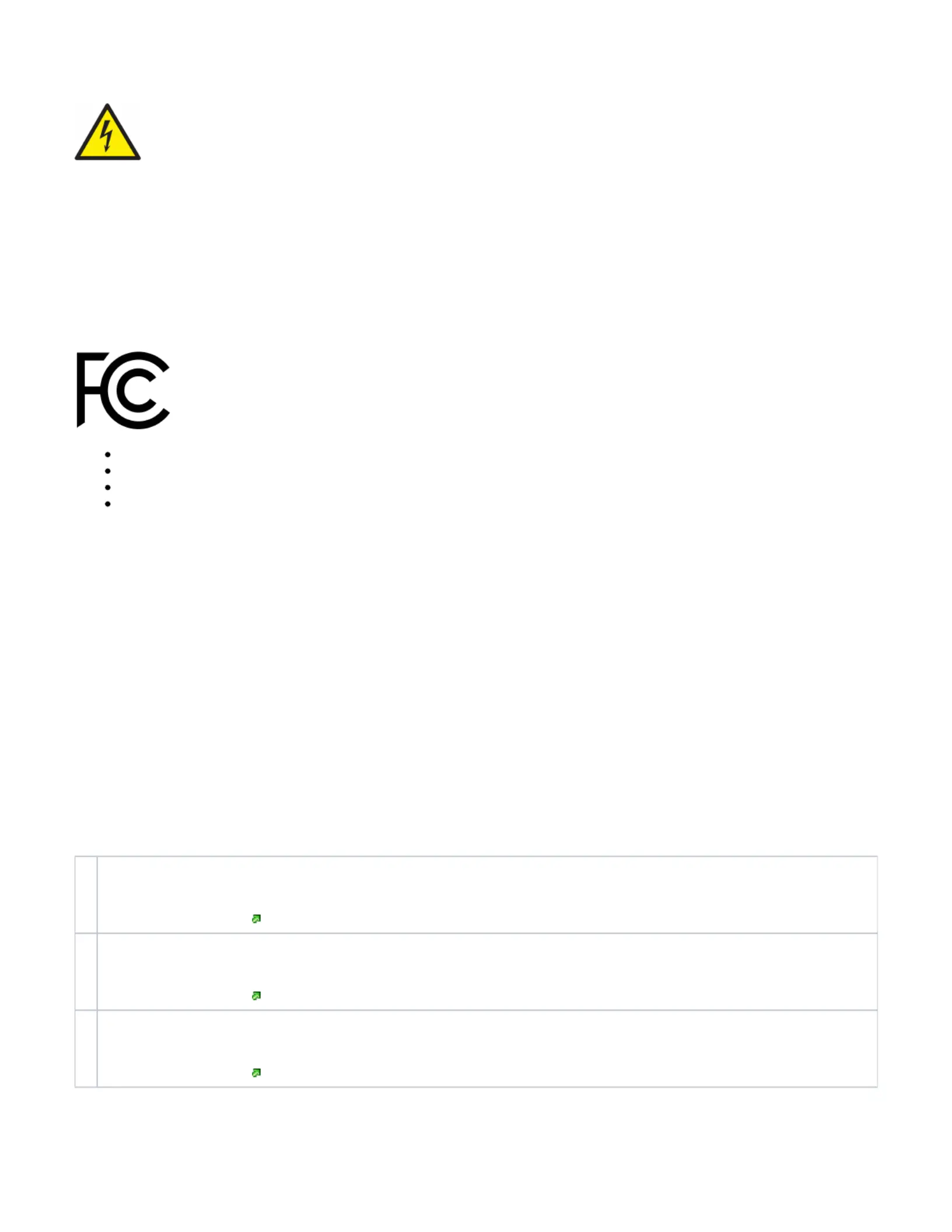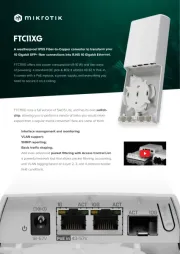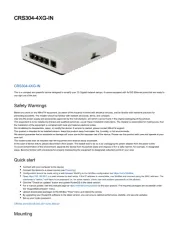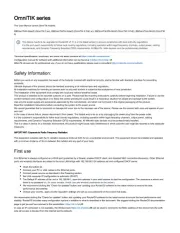Mikrotik CRS326-24G-2S+IN Handleiding
Mikrotik
Niet gecategoriseerd
CRS326-24G-2S+IN
Bekijk gratis de handleiding van Mikrotik CRS326-24G-2S+IN (7 pagina’s), behorend tot de categorie Niet gecategoriseerd. Deze gids werd als nuttig beoordeeld door 21 mensen en kreeg gemiddeld 3.7 sterren uit 11 reviews. Heb je een vraag over Mikrotik CRS326-24G-2S+IN of wil je andere gebruikers van dit product iets vragen? Stel een vraag
Pagina 1/7

CRS326-24G-2S+IN
CRS326-24G-2S+IN
CRS326-24G-2S+IN
CRS326-24G-2S+INCRS326-24G-2S+IN
CRS326-24G-2S+IN
CRS326-24G-2S+IN
CRS326-24G-2S+IN
CRS326-24G-2S+INCRS326-24G-2S+IN
Safety Warnings
Before you work on any equipment, be aware of the hazards involved with electrical circuitry, and be familiar with standard practices for preventing
accidents.
Ultimate disposal of this product should be handled according to all national laws and regulations.
The Installation of the equipment must comply with local and national electrical codes.
Failure to use the correct hardware or to follow the correct procedures could result in a hazardous situation to people and damage to the system.
Read the installation instructions before connecting the system to the power source.
Quick start
Connect two powering units to the AC source using power cords.
The Initial connection has to be done via the Ethernet cable, using the MikroTik Winbox utility.
Use Winbox to connect to the default IP address of 192.168.88.1 from any port, with the username and no password. If IP is no available
admin
choose the Neighbors tab and connect to the device using the MAC address.
We recommend clicking the "Check for updates" button and updating your RouterOS software to the latest version to ensure the best
performance and stability. The device needs to have an active internet connection.
To upgrade manually go to our download page https://mikrotik.com/download
Choose packaged based on your device model.
Download to your PC.
Upload packages to the Files menu in WinBox and reboot the device.
Set up your password to secure the device.
Mounting
The device is designed to use indoors and it can be placed on the desktop.
The device has no protection from water contamination, please ensure the placement of the device in a dry and ventilated environment.
We recommend Cat6 cables for our devices.
Mounting and configuration of this device should be done by a qualified person.
Extension slots and ports
24 of Gigabit Ethernet ports.
Two 10G SFP+ ports.
1x RJ45 console port (set at 115200bits/s, 8 data bits, 1 stop bit no parity).
Please visit wiki pages for MikroTik SFP module compatibility and configuration table: https://wiki.mikrotik.com/wiki
/MikroTik_SFP_module_compatibility_table
Powering
The device accepts power in the following ways:

1.
2.
3.
Ethernet port accepts passive PoE 10-30 V DC .
Direct-input power jack (5.5 mm outside and 2 mm inside, female, pin positive plug) accepts 10-30 V DC.
The power consumption under maximum load can reach 24 W.
Connecting to a PoE Adapter:
Connect the Ethernet cable from the device to the PoE+DATA port of the PoE adapter;
Connect an Ethernet cable from your local network (LAN) to the PoE adapter;
Connect the power cord to the adapter, and then plug the power cord into a power outlet.
Booting process
The device supports booting RouterOS (for complete routing and switching configuration) or SwOS (for only using as a switch). By default, the device will
boot RouterOS, but you can reboot into the other operating system in the following ways:
From SwOS: In the System menu, click the "Boot RouterOS" button on the bottom of the page.
From RouterOS: in the System, RouterBOARD menu, click "Settings" and there select "Boot OS".
It is also possible to select the OS and configure other boot settings via the serial console menu.
Reset button
The RouterBOOT reset button has the following functions. Press the button and apply the power, then:
Release the button when green LED starts flashing, to reset RouterOS configuration to defaults.
Release the button when the LED turns solid green to clear all configuration and defaults.
Release the button after LED is no longer lit (~20 seconds) to cause a device to look for Netinstall servers (required for reinstalling RouterOS over
the network).
Regardless of the above option used, the system will load the backup RouterBOOT loader if the button is pressed before power is applied to the device.
Useful for RouterBOOT debugging and recovery.
Operating system support
The device supports dual boot SwOS software version 2.9 and RouterOS v6. The specific factory-installed version number is indicated in the RouterOS
menu /system resource. Other operating systems have not been tested.
https://wiki.mikrotik.com/wiki/SwOS
Included Parts
Safety Notice

Electric shock hazard. This equipment is to be serviced by trained personnel only.
Federal Communication Commission Interference Statement
This equipment has been tested and found to comply with the limits for a Class B digital device, pursuant to Part 15 of the FCC Rules. These limits are
designed to provide reasonable protection against harmful interference in a residential installation.
This equipment generates, uses and can radiate radio frequency energy and, if not installed and used in accordance with the instructions, may cause
harmful interference to radio communications. However, there is no guarantee that interference will not occur in a particular installation. If this equipment
does cause harmful interference to radio or television reception, which can be determined by turning the equipment off and on, the user is encouraged to
try to correct the interference by one of the following measures:
Reorient or relocate the receiving antenna.
Increase the separation between the equipment and receiver.
Connect the equipment into an outlet on a circuit different from that to which the receiver is connected.
Consult the dealer or an experienced radio/TV technician for help.
FCC Caution: Any changes or modifications not expressly approved by the party responsible for compliance could void the user's authority to operate this
equipment.
This device complies with Part 15 of the FCC Rules. Operation is subject to the following two conditions: (1) This device may not cause harmful
interference, and (2) this device must accept any interference received, including interference that may cause undesired operation.
Note: This unit was tested with shielded cables on the peripheral devices. Shielded cables must be used with the unit to ensure compliance.
Industry Canada
This device complies with Industry Canada licence-exempt RSS standard(s). Operation is subject to the following two conditions: (1) this device may not
cause interference, and (2) this device must accept any interference, including interference that may cause undesired operation of the device.
Le présent appareil est conforme aux CNR d'Industrie Canada applicables aux appareils radio exempts de licence. L'exploitation est autorisée aux deux
conditions suivantes: (1) l'appareil ne doit pas produire de brouillage, et (2) l'utilisateur de l'appareil doit accepter tout brouillage radioélectrique subi, même
si le brouillage est susceptible d'en compromettre le fonctionnement.
CE Declaration of Conformity
Manufacturer: Mikrotikls SIA, Brivibas gatve 214i Riga, Latvia, LV1039.
BG
С настоящото Mikrotīkls SIA декларира, че този тип радиосъоръжение RouterBOARD е в съответствие с Директива 2014/53/ЕС. Цялостният
текст на ЕС декларацията за съответствие може да се намери на следния интернет адрес:
https://mikrotik.com/products
CS Tímto Mikrotīkls SIA prohlašuje, že typ rádiového zařízení RouterBOARD je v souladu se směrnicí 2014/53/EU. Úplné znění EU prohlášení o shodě
je k dispozici na této internetové adrese:
https://mikrotik.com/products
DA Hermed erklærer Mikrotīkls SIA , at radioudstyrstypen RouterBOARD er i overensstemmelse med direktiv 2014/53/EU. EU-
overensstemmelseserklæringens fulde tekst kan findes på følgende internetadresse:
https://mikrotik.com/products
Product specificaties
| Merk: | Mikrotik |
| Categorie: | Niet gecategoriseerd |
| Model: | CRS326-24G-2S+IN |
| Kleur van het product: | Wit |
| Breedte: | 285 mm |
| Diepte: | 144 mm |
| Hoogte: | 44 mm |
| Stroom: | 1.2 A |
| Vermogensverbruik (max): | 21 W |
| DC voltage input: | 10 - 30 V |
| Certificering: | CE/RED, EAC, ROHS |
| Intern geheugen: | 512 MB |
| Type processor: | Ja |
| Ethernet LAN, data-overdrachtsnelheden: | 1000 Mbit/s |
| Rack-montage: | Ja |
| MAC adres filtering: | Ja |
| Aantal voedingen: | 2 |
| Flash memory: | 16 MB |
| Vermogenstoevoer inclusief: | Ja |
| VLAN=ondersteuning: | Ja |
| Power over Ethernet (PoE): | Ja |
| Type geheugen: | DDR3-SDRAM |
| Switchingcapaciteit: | - Gbit/s |
| MAC-adrestabel: | - entries |
| 10G support: | Ja |
| Rate limiting: | Ja |
| Switch type: | Managed |
| Aantal basis-switching RJ-45 Ethernet-poorten: | 24 |
| Type basis-switching RJ-45 Ethernet-poorten: | Gigabit Ethernet (10/100/1000) |
| Aantal moduleslots SPF: | 2 |
| Port mirroring: | Ja |
| IP routing: | Ja |
| Bedrijfstemperatuur (T-T): | -40 - 60 °C |
| Stroom via Ethernet (PoE): | 30 V |
| Type Power over Ethernet (PoE) ondersteunt: | Passive PoE |
Heb je hulp nodig?
Als je hulp nodig hebt met Mikrotik CRS326-24G-2S+IN stel dan hieronder een vraag en andere gebruikers zullen je antwoorden
Handleiding Niet gecategoriseerd Mikrotik

18 Augustus 2025

15 April 2025

19 Februari 2025

6 November 2024

15 Juli 2024

14 Juni 2024

25 April 2024

12 Maart 2024

16 November 2023

30 Oktober 2023
Handleiding Niet gecategoriseerd
- Jocel
- Lantronix
- Ecozy
- Weller
- Saturn
- Springlane
- Alcon
- Antelope
- DB Technologies
- Atomos
- Archos
- Nec
- GermGuardian
- Schonbek
- Laserworld
Nieuwste handleidingen voor Niet gecategoriseerd

14 September 2025

14 September 2025

13 September 2025

13 September 2025

13 September 2025

13 September 2025

13 September 2025

13 September 2025

13 September 2025

13 September 2025